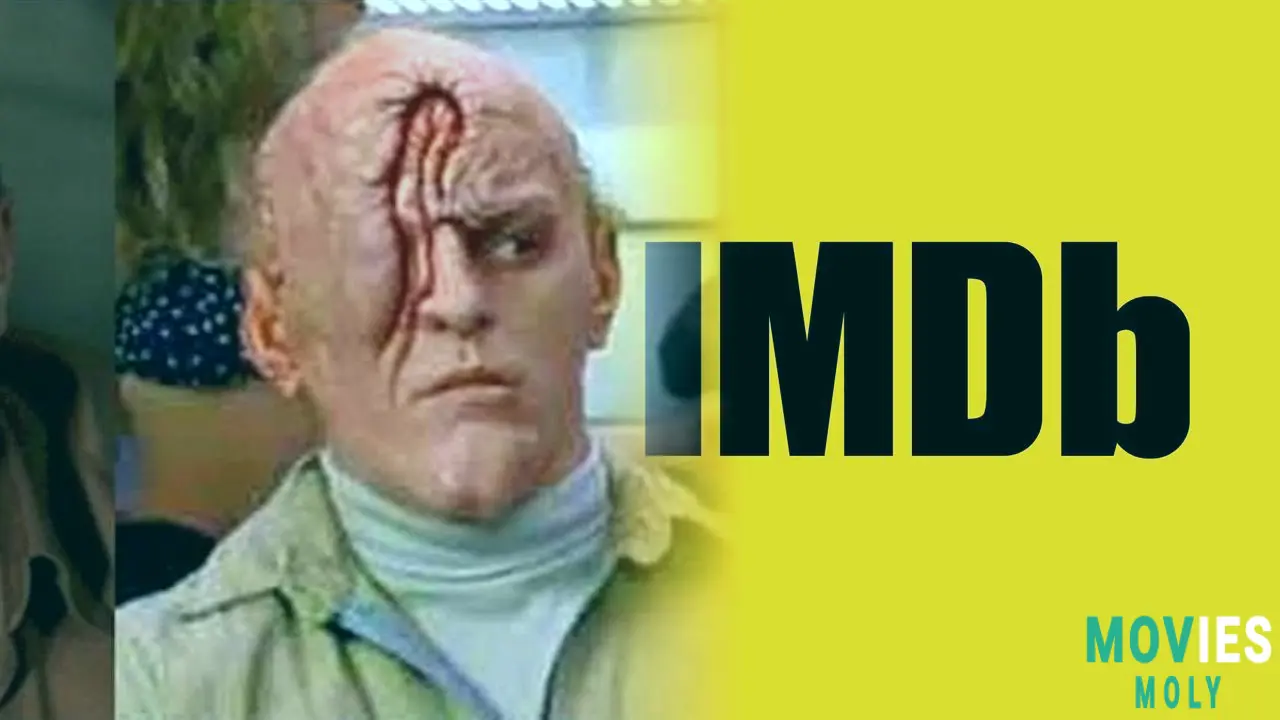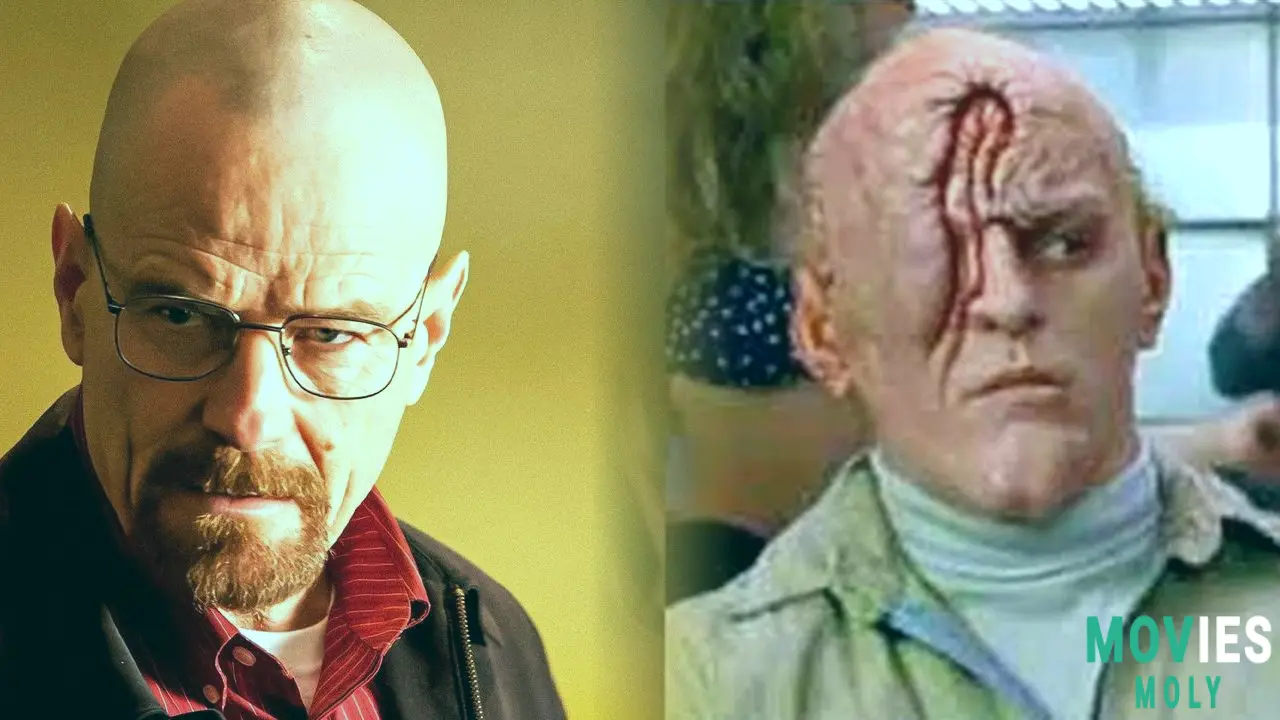The crime thriller TV show "Breaking Bad" originally aired in 2008 and immediately became a global sensation. It follows "Walter White," a high school chemistry teacher who, after being diagnosed with cancer, starts producing and distributing methamphetamine to make sure his family has enough money. This choice sends him into the criminal world, where he becomes the heartless "Heisenberg." The show has won a lot of honors, including 16 Primetime Emmy honors and two Golden Globe Awards. Critics have loved it. Guinness World Records named it the most critically acclaimed TV show of all time in 2013. You may watch "Breaking Bad" on Netflix, and the license will last until at least April 18, 2027.
The Beginning of Heisenberg: How Walter White ChangedThe main story of "Breaking Bad" is about "Walter White." He starts out as a kind, sad chemistry instructor who has been told he has terminal lung cancer. His first goal is to help his family, who are having trouble making ends meet. But as he gets more involved in the meth industry with his old student, Jesse Pinkman, his personality transforms. He gets more and more controlling and power-hungry. One of developer Vince Gilligan's main goals was to change "Mr. Chips" into "Scarface." Walter lets go of his moral doubts and uses lies and violence to develop his meth empire. Walter's dark side comes out in the famous "Heisenberg" character. His journey is one of the most interesting character arcs ever on TV.
Skyler, I'm not in danger. I am the threat. You think that of me when a guy answers his door and gets shot? No! I am the one who knocks!
Beyond Walt: The Unforgettable Cast of Breaking Bad

The series is also known for its large ensemble of supporting characters, each of whom goes through their own complicated arcs.
Jesse Pinkman: Getting Better and Getting Worse
Aaron Paul plays "Jesse Pinkman," who starts out as a small-time drug dealer. When they work together to make high-quality blue meth, he becomes caught up in Walter's world. Jesse's character journey is full of internal conflicts as he fights addiction and shame over what he's done. Jesse is still one of the most likable characters since he is weak and wants to make things right, even though he has shortcomings. In the sequel film "El Camino," he finally gets the independence he deserves.
Yes, Mr. White! Yes, science!
Skyler White: The Moral Compass Under Attack
Skyler White, Walter's wife, first stands by him, but then she gets involved in his crimes. Her character is the opposite of Walter's, which shows how his decisions affect his morals. She feels split between wanting to protect herself and being loyal to her family.
Hank Schrader: The Unwitting Enemy
Hank Schrader, Walter's brother-in-law and a DEA agent, is boisterous and sure of himself at first. After surviving an attack, his world falls apart, and his hubris turns into an unending search for "Heisenberg." His final discovery of Walter's identity leads to a very heroic but sad end.
Gus Fring: The Kingpin Who Plans
We learn that "Gus Fring" is a prosperous businessman who covertly operates a huge network for selling meth. He is a notable villain because he is calm and plans everything out well. Gus is an example of dualism since he acts like a good citizen while also doing terrible things.
The Practical Professional Mike Ehrmantraut
"Mike Ehrmantraut" is a former police officer who is now a fixer. He is recognized for being practical and loyal. "Better Call Saul" goes into more detail about his character, including his past and what drives him. Mike is typically the voice of reason in the criminal underground since he values professionalism and getting things done quickly.
Saul Goodman: From Slippin' Jimmy to a Lawyer for Criminals
The shady lawyer "Saul Goodman" adds humor while dealing with the morally gray parts of the criminal court system. The prequel series "Better Call Saul" goes into great detail about his character, showing how he went from being Jimmy McGill to being a criminal lawyer.
This is my own home, and I won't be bothered, bitch!
Moral Mazes and Bad Outcomes: A Look at the Main Ideas of the Show
"Breaking Bad" takes a more complicated look at morality, avoiding easy lines between good and bad. Characters sometimes use complicated reasons to explain their bad behavior, which makes things less clear. The show makes people think about their own moral limits. As Walter's acts get worse and worse, people wonder when they can no longer feel sorry for him. The series also looks at the connection between ambition and morals, revealing how power can make people bad.
Say my name.
Pivotal Moments: A Look at the Most Famous Episodes of Breaking Bad
"Breaking Bad" is known for its overall tale, but it's also known for individual episodes that are some of the best examples of television storytelling. The last episode of the series got rave reviews from everyone.
The "Fly" Episode: A Lesson in How to Use Less
The episode "Fly" from season three is special because of its unusual, closed-off environment. Walter and Jesse are stuck in their superlab and can't stop thinking about a fly. This episode provides a thorough look at Walter's remorse and control problems. Some fans think the fly is a sign of Walter's surviving conscience or a flaw in his quest for perfection.
The Craft Behind the Crystal: Writing, Directing, and Cinematography
"Vince Gilligan" came up with "Breaking Bad" with the notion of turning the main character into the bad guy. He wanted to make a "drama" with cinematic quality that was based on characters. Gilligan worked closely with a group of writers and directors, including Peter Gould, to make sure that each episode seemed like it had a purpose and was connected to the others. The show's careful attention to visual elements and symbolism set a new standard for TV production qualities. People praised cinematographer Michael Slovis for his striking visual style, which was often inspired by Sergio Leone's Westerns.
The Music of Breaking Bad: Soundscapes of Sin
The music in "Breaking Bad" is very important for setting the mood and developing the characters. Dave Porter's original score, which is often austere and electronic, adds to the suspense and brings to mind the stark New Mexico backdrop. The show also uses carefully chosen licensed songs to go along with scenes and montages. This mixing of musical styles is like how the play blurs the distinctions between right and wrong.
Fan theories, arguments, and questions that won't go awayEven years after it ended, "Breaking Bad" is still the subject of fan theories and discussions. One popular idea is that Walter White takes on features from the individuals he kills, like Krazy-8's crustless sandwiches. Other ideas look at how the program relates to other shows or what the show's features represent in a symbolic way.
The Meaning of Colors in Breaking Bad
A lot of people think the color is a code in "Breaking Bad." The clothes that characters wear often show how they feel or what they believe is right. For instance, green might stand for corruption, and blue is linked to Walter's meth. People often think of the burned pink teddy bear that was found after the plane accident as a sign of Walter's lost innocence or morals.
Easter eggs and other hidden things
There are a lot of foreshadowing and subtle references in the series, which has led fans to find a lot of Easter eggs. These hidden elements make the experience more complex and rewarding for people who pay attention.
El Camino, Better Call Saul, and Its Enduring Legacy in the Breaking Bad UniverseThere is now a bigger franchise because of "Breaking Bad." "El Camino: A Breaking Bad Movie" is a sequel that picks up Jesse Pinkman's journey right after the end of the first season. Many of the characters from "Breaking Bad" return in "Better Call Saul," a prequel series that tells the story of "Saul Goodman." "Better Call Saul" also has flash-forwards that illustrate what Saul's life is like after "Breaking Bad."
The History of Anti-Heroes on TV
"Breaking Bad" changed the way TV shows tell stories about antiheroes. It broke the assumption that TV heroes had to be nice or always do the right thing. Walter White's drastic change went against customary stories and made it hard to tell right from wrong. "Breaking Bad" made writers more willing to take chances with the way they told stories and how fast they moved. The rise of stories with antiheroes that followed it shows how it changed things. This led to series like "Ozark" and "Fargo."
If you don't know who I am, it might be prudent to be careful.
A Final Look at Why Breaking Bad Is Still a Masterpiece"Breaking Bad" is still a great show because of its complex plots, interesting character development, and movie-like presentation. It always gets a lot of views on Netflix, which shows that it is still popular. The last season of the series has a great 97% rating on Rotten Tomatoes, and the third season got a perfect 100%. Other "crime drama" shows like "Ozark" and "Queen of the South" have comparable themes and experiences, but "Breaking Bad" is different because it goes deeper into people's weaknesses and wants. It still sets the bar for smart, high-quality TV.






